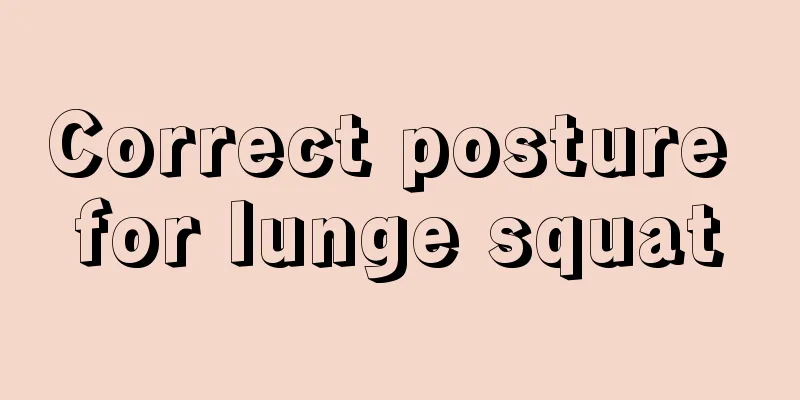What are the methods for preventing and treating tumor complications

|
I believe everyone is familiar with the disease of cancer. Every day, a large number of people are diagnosed with cancer around us. In my country, about 80% of patients are already in the middle or late stages when malignant tumors are discovered. The main cause of pain, disability and death for patients is tumor complications. Here we will introduce some relevant knowledge in this regard and recommend several prevention methods for you. Hope it helps. The basic contents of tumor complications are: direct or indirect causes during the occurrence and development of malignant tumors; iatrogenic problems caused by surgery, radiotherapy, chemotherapy (including diagnosis), etc. The causal relationship formed from this to that can be described as "when the city gate is on fire, the fish in the pond are affected." Even whether certain complications are discovered in time and treated properly determines whether the tumor can be cured or whether further treatment can be obtained to obtain long-term survival opportunities. The harm is self-evident. 1. Method 1: Applying the prevention ideas of traditional Chinese medicine to tumor complications "preventing before illness" and "preventing complications after illness" is an important aspect of the prevention ideas of traditional Chinese medicine. The "Nanjing·Seventy-seventh Difficulty" said: "The so-called treatment of illness before it occurs means that when seeing a liver disease, one knows that the liver will pass it on to the spleen. Therefore, one should first strengthen the spleen qi to prevent it from being affected by the liver evil. That is why it is said to treat the illness before it occurs." This idea of "first calming the place that has not been affected by evil" has certain clinical value in preventing tumor bleeding. For example, leukemia patients suffer from bone marrow suppression and thrombocytopenia caused by radiotherapy and chemotherapy, and the use of hormones to interfere with the coagulation mechanism, which makes them very prone to bleeding. It is unreasonable to give Western hemostatic drugs before bleeding occurs, but giving Chinese medicine for nourishing blood and strengthening the spleen, tonifying the kidney and cooling blood can have practical significance in preventing bleeding. Method 2: Use the four diagnostic methods of traditional Chinese medicine to detect the precursors of tumor complications. Modern medicine provides microscopic quantitative basis for the examination of tumor complications, but it cannot cover many serious complications, let alone solve the "precursors" of complications. The traditional Chinese medical theory that “what goes on inside will manifest itself outside” suggests that the four examinations of traditional Chinese medicine may provide precursor symptoms of complications, and is an important supplement to Western medical diagnosis. For example, we once encountered a patient with gastric cancer who had a history of gastric bleeding. The coagulation time, prothrombin index and stool occult blood test showed no abnormalities. However, his complexion gradually became ruddy, he became feverish and excited, his pulse became stringy and strong, and his tongue became red with red spots on the tip, indicating the precursor of "blood heat". Soon after, the patient suddenly vomited 1000ml of blood. Method three: Combine traditional Chinese and Western medicine to treat tumor complications. Applying both Chinese and Western methods to treat complications can often improve the efficacy of the treatment. For example, if the patient still has a high fever after taking antibiotics, using Xijiao Dihuang Decoction or Qingkailing can help reduce the temperature. Using naproxen and indomethacin to treat cancer fever can cause profuse sweating. Taking Chinese medicines such as Schisandra chinensis and floating wheat to invigorate qi and strengthen the exterior can stop sweating and prevent collapse. Anthracycline chemotherapy drugs such as doxorubicin often cause discomfort in the precordial area and abnormal electrocardiograms. Oral administration of the traditional Chinese medicine Shengmai Yin can often correct this phenomenon. The bidirectional regulatory effect of traditional Chinese medicine can often play a role in rescue. For example, in the rescue of diffuse intracapillary coagulation, hemostatic drugs such as hemostatic aromatic acid are used to stop bleeding. A slight excess of this drug will promote microthrombosis and reduce tissue perfusion. In order to dissolve blood clots, heparin and other blood-activating drugs are sometimes used, which can easily cause bleeding in the case of thrombocytopenia. In the case of both bleeding and dissolving blood clots in a short period of time, a slight carelessness may lead to medication conflicts. At this time, Chinese medicine can often improve the situation. First, Chinese herbal hemostatics such as lotus nodes and agrimony do not increase blood viscosity, and can relieve concerns about bleeding by dissolving blood clots with heparin. Secondly, blood-nourishing herbs such as angelica and red peony root can invigorate blood circulation without causing bleeding, and can prevent the formation of microthrombi when combined with Western hemostatic drugs. Third, Chinese medicines such as Panax notoginseng, Xueyutan, and Puhuang can both stop bleeding and promote blood circulation. This bidirectional effect just meets the needs of treating DIC for both stopping bleeding and promoting blood circulation. If it can be combined with Western medicine, it will show the characteristics of the integration of Chinese and Western medicine. Active prevention and treatment can prevent and cure these complications, allowing more cancer patients to receive appropriate treatment and effective relief. Before treating an oncological emergency, one should make judgments about several factors that affect the diagnosis and treatment of oncological emergencies, and treat different situations differently. Cancer patients have four common psychological problems, and how to solve these psychological problems is of great significance to enhancing patients' sense of security and confidence in recovery. 2. Role disorder: When a person gets sick, he is forced to transform from a normal social role to the role of a patient. He needs to stop his usual job and cannot take care of his family. Instead, he needs his relatives to take care of him. In clinical practice, many patients are unwilling to accept such a role change. The sense of responsibility for work, attachment to family and worry about the disease cause patients to feel fear and anxiety. Degeneration and Dependence Due to fear of the disease, the patient may degenerate in behavior. They should let their family members do what they can do themselves. They rely too much on their family members, cannot adapt to the hospital environment quickly, are emotionally fragile, and have a weakened will. Dependence is a negative emotion that will reduce the patient's own immune function, reduce the patient's confidence and ability to resist disease, and is not conducive to recovery. Anxiety Anxiety is a natural response to fear and most patients experience it at some point during their illness. If fear is not relieved promptly and effectively, it will develop into uncontrollable anxiety, such as palpitations, sweating, headaches, dizziness, etc. Patients often lose control of their behavior, become easily agitated, lack patience, lose their temper, blame themselves and condemn others. Liang Shubo pointed out that the degree of anxiety is related to a person's psychological quality, education level, life experience and coping ability. The above are some prevention and treatment methods for tumor complications, most of which are mainly traditional Chinese medicine therapies. Traditional Chinese medicine therapies may seem time-consuming and the effect is not obvious, but they can gradually eliminate complications from the root and can be used for reference. Care about your health, love life, and let us strengthen our understanding of tumor complications. |
<<: Introduction to the best method to treat myopia
>>: What is the early stage of heart disease
Recommend
How to use hand mask?
People are very familiar with facial masks, and w...
Can I touch hot water during confinement?
There are certain essential differences between t...
What foods are incompatible with Chinese toon
Toona sinensis is also called toona sinensis buds...
Are stainless steel pots harmful to the human body?
When cooking food, we often cannot do without the...
Lose weight and become chopstick-thin legs in one week
First of all, we need to understand that slimming...
What can liver cancer patients eat to recover? These foods can be eaten in the late stage of liver cancer
What should liver cancer patients eat? Hepatocell...
What are the early symptoms of lung cancer? These early symptoms of lung cancer should be taken seriously
There are a lot of people smoking nowadays. When ...
Can early osteosarcoma be cured?
Patients with osteosarcoma may generally experien...
What dietary habits can lead to lung cancer? Five types of food can help treat lung cancer
Lung cancer is one of the most common malignant t...
What are the methods that help hair growth
Hair is related to our beautiful appearance and i...
c56 disc herniation
Nowadays, people’s life pressure is gradually inc...
How much do you know about the difference between fresh ginger and dried ginger?
Ginger plays a huge role in our daily life, from ...
What are the main symptoms of prostate cancer? What are the causes of prostate cancer?
Nowadays, many male friends suffer from different...
Side effects of muscle-building protein powder
I believe that many people who like fitness have ...
How to make homemade dishwashing liquid from grapefruit peel?
Pomelo peel refers to the peel peeled from the po...









